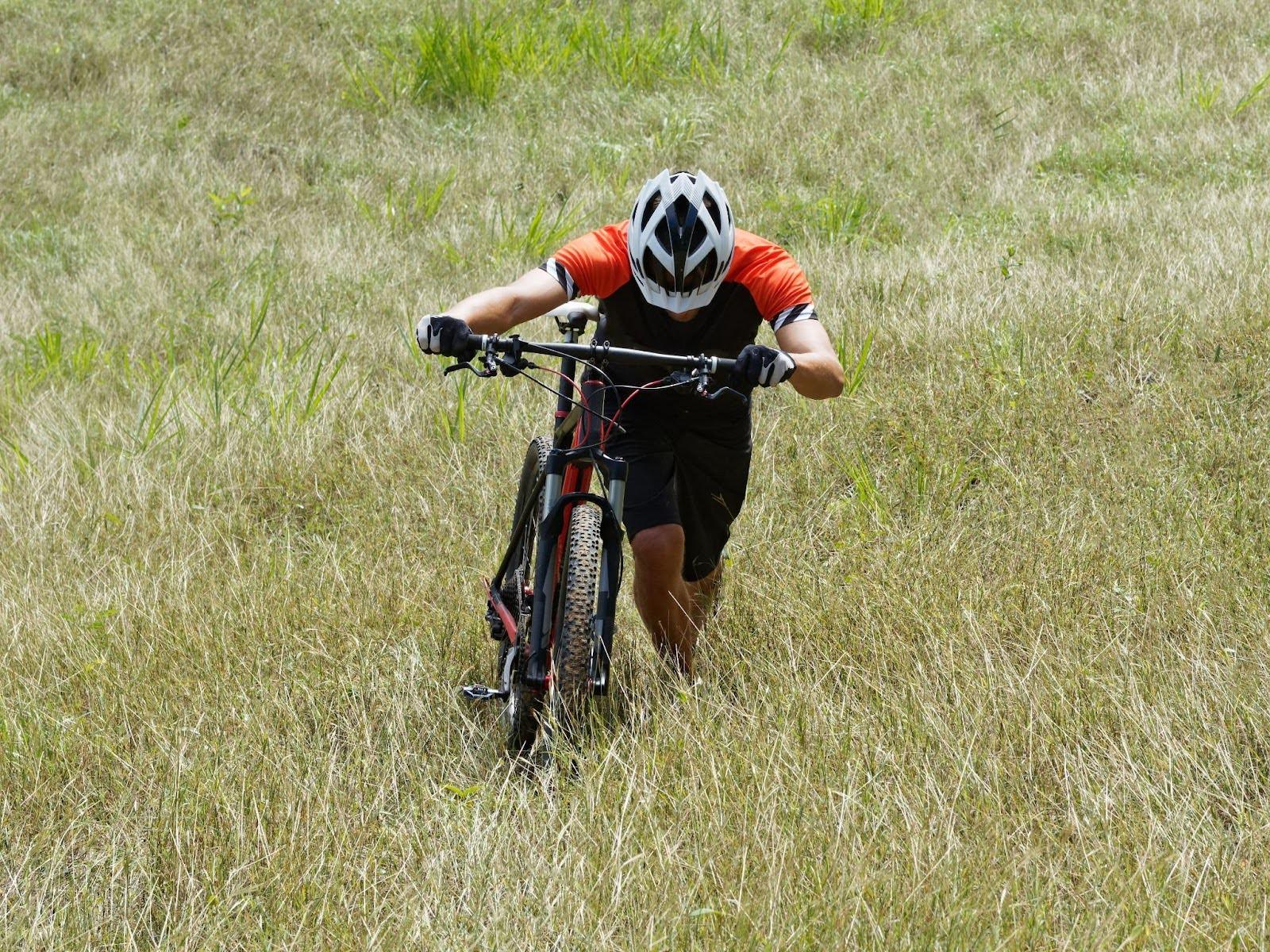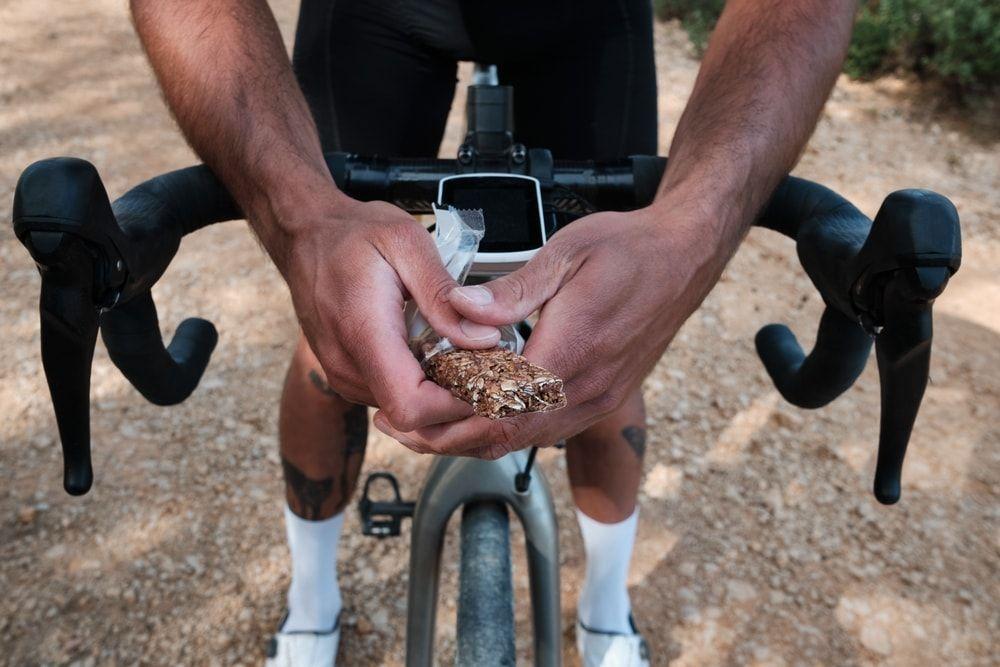The role and importance of carbohydrates during physical activity – especially during intense exertion – have been recognized in sports science for decades. In endurance sports such as cycling, running and triathlon, pasta parties, energy bars and carbohydrate drinks are part of the standard nutrition routine for athletes.
In recent years, high rates of carbohydrate ingestion have gained attention in the cycling world, as greater carbohydrate intake appears to enhance performance. Previous recommendations of 60-90 grams per hour have now been adjusted to 120-150 grams per hour, with some athletes even reporting intake levels of up to 200 grams per hour.
On the other end of the spectrum, however, some athletes perform at their best cycling on a low-carb diet. It seems that both high- and low-carb approaches can lead to optimal performance in endurance sports. Clearly, there are different nutritional strategies depending on individual preferences.
What’s a low-carb diet?
A low-carb diet means reducing daily carb intake. Carbs are chains of glucose molecules – from simple sugars like table sugar, to complex carbs like starch. The longer the chain, the slower the carb is digested into glucose which is then transported in the bloodstream as blood glucose.
Be aware that the quicker a sugar is absorbed into the bloodstream, the more insulin is released by the pancreas to keep blood sugar within the normal range of 4-5.5 mmol/L (at rest; blood sugar rises during exercise).
A low-carb diet for cyclists is 50-150 grams of carbs per day. Below 50 grams, it’s very low carb or ketogenic which is only relevant or beneficial for specific health issues and not for endurance athletes. 150-250 grams is moderate. Use one of the many nutrition-tracking apps to monitor your daily carb intake.
Low-carb and cycling: What research shows
There is limited research on how a cycling low-carb diet affects endurance performance. Much of sports nutrition has traditionally focused on high-carbohydrate fuelling, based on the old adage “the more you can absorb without gastrointestinal stress, the better your performance.”
But the work of Dr. Philip Prins of Grove City College in the U.S. and Professor Tim Noakes of the University of Cape Town in South Africa has challenged this assumption.
Prins, an exercise physiologist specializing in metabolism and endurance performance, and Noakes, a renowned sports scientist best known for his work on fatigue and carbohydrate metabolism, have done a series of tightly controlled studies comparing carb cycling vs. low carb. They’ve looked at how well athletes adapt to low-carbohydrate, high-fat (LCHF) diets over several weeks, measuring fat oxidation, performance and perceived exertion.
In several experiments, Prins and his colleagues found that after 4-6 weeks of adaptation, athletes on an LCHF plan performed similarly to those on a high-carb diet, despite using fat as their primary fuel. This study shows how well the body can adapt metabolically and supports the idea that a low-carb diet for cyclists can work for competitive performance if done correctly.
And Noakes and Prins recently collaborated on a study that showed that a small amount of carbohydrate during endurance exercise – around 10 grams per hour – can prevent hypoglycaemia and even improve performance in both low- and high-carb adapted athletes. This emerging evidence suggests a more nuanced picture: Rather than an all-or-nothing choice, a flexible, low-carb diet plan may allow you to fuel according to training intensity and personal preference.
Together these studies highlight the importance of adaptation time, individual variability and context. Not every cyclist will thrive on a low-carb diet but those who do often experience improved fat metabolism, fewer energy crashes and steadier endurance over long-distance rides.
Low-carb diet for cyclists: The benefits
The biggest benefit is less carb-intake during cycling workouts and events. A fat-adapted, low-carb cyclist has a much lower chance of “bonking” and can produce more energy from fat metabolism, with less carb dependency.

Another benefit is less GI discomfort during long rides or races with heavy carb loading. Fat adaptation can also mean better late-stage performance as more carbs are available for sprints or high intensity efforts at the end of a ride outdoors or on ROUVY.
A lesser talked about benefit is long-term health. Regular high-carb consumption can lead to insulin resistance, a precursor to diabetes – a major metabolic health issue.
Risks of a low-carb diet in cycling
There are no health risks with low carb and cycling for most people. The biggest risk is the transition period to becoming fat adapted.
The most common mistake is not eating enough calories in the first few weeks. The reduction in carbs must be compensated by more protein and fat. If total calories aren’t maintained you’ll feel fatigued and performance will suffer making it unsustainable.
Performance will drop during the first four weeks of adaptation but will return to normal – and sometimes even improve – once adaptation is complete.
Smart carb nutrition
Instead of being on a strict low-carb diet all the time, you can also adjust your carb intake based on your training goals – an approach known as Smart Carb nutrition or a low carb cycling diet plan.
For example:
- To improve aerobic capacity (Zone 2 training), start with low carb availability and only moderate carb intake during training to stimulate fat metabolism.

- For VO2 Max training or high intensity sessions, have enough carbs before and during training to fuel the glycolytic pathways that power high outputs.
Whatever approach you choose, get guidance from an experienced sports nutritionist to ensure you plan properly and don’t make common mistakes.
Tips for cyclists going low carb
If you’re thinking of trying a low-carb diet for cycling, start slow and listen to your body. Below are practical nutrition tips to help you experiment safely, adapt and find what works for you and your performance and lifestyle.

Use a food-tracking app to track your nutrition and carb intake to see what you’re currently eating.
Monitor your macronutrient split (carbs, protein, fat) and keep total calories the same as before.
Be patient – adaptation takes at least 4-6 weeks.
To allow your metabolism to fully adapt, don’t have “cheat days” during this period.
Adjust your daily carb intake based on training volume and intensity to find your sweet spot.
Look up low-carb recipes and meal plans online to keep your diet varied and fun.
Try to avoid “simple sugars.” Table sugar, sweets, fizzy drinks and fruit juices are the most common ones.
During training or races, focus on keeping blood glucose stable. Using a continuous glucose monitor (CGM) can help you see your carb metabolism in real time.
Conclusion
“All roads lead to Rome” – there is no single best nutrition plan. It all depends on your individual preferences and how your body responds.

If you perform well on a high-carb diet, there’s no need to change. But if you struggle with bonking, late-session fatigue, or gastrointestinal discomfort under high-carb intake, then a low-carb cycling approach may be a valuable alternative.
Always seek professional guidance to help tailor your nutrition to your unique physiology and performance goals.
Further reading
- Biology of Sport, “High Fat Diet Improves Metabolic Flexibility During Progressive Exercise To Exhaustion (VO2 Max Testing) And During 5 KM Running Time Trials”
- ROUVY, “Endurance Nutrition For Cyclists And Triathletes: What To Eat & When”
- Frontiers in Nutrition, “Effect Of A High Fat Diet Vs. High Carbohydrate Diets With Different Glycemic Indices On Metabolic Parameters In Male Endurance Athletes”
- ROUVY, “Body Weight Management In Cycling: Smart Strategies For Sustainable Performance”









